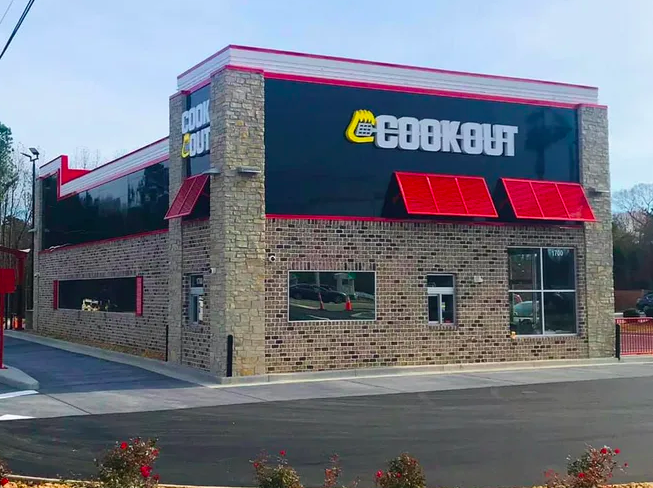Key performance indicators (KPIs) are measurements that reflect the factors you’ve deemed critical to the success of your food truck. During the process of evaluating your mobile food business, you’ll regularly collect data, determine how they’ll be used as a standard, and compare them to a benchmark to evaluate your truck’s progress. Today we share KPI examples that center on your bottom line. Sales, food costs, staffing and service that help determine whether your truck is succeeding.
Many aspects of your mobile food business are measurable. That doesn’t make them keys to your food truck’s success. In selecting KPIs, limit them to the topics that are essential to reaching your business goals is critical. Also, keeping the number of key performance indicators you follow small enough to keep the staff’s attention focused on achieving the same key performance indicators is important.
Food Truck Key Performance Indicators
Sales and Kitchen KPI Examples
These KPI examples center on your bottom line. Your sales and food costs will determine whether your truck is succeeding financially.
- Food cost percentage. Vendors usually calculate food cost as a percentage of total business expenses. You measure it by adding your food purchases for the week and comparing those figures to your weekly food sales. This can range from 25 to 35 percent.
- Weekly sales. This number is one of the standard sales-related numbers that everyone looks at. Weekly sales can vary widely from truck to truck. The number to look at is any change you find from week to week and how it compares to previous years.
- Sales per head. One of the most used performance indicators is sales per head. Calculate this by dividing your total sales by the number of customers you serve. You can calculate your sales per head at different times throughout the day. For a more detailed understanding, you can track your sales per head each week or month to look for reasons for positive or negative trends.
- Inventory value. How much food is being regularly stored in your commercial kitchen? It should be less than a week’s use, but it can get out of control.
- Best (and worst) selling items. Check the weekly sales from your receipts to help you determine which menu items are consistently selling out or taking up space on your menu.
Staff Member KPI Examples
If you have more than a couple of employees, the following staff indicators will help you keep track of how your employees are impacting your business. If you choose to use only one indicator in this category, use the total labor cost indicator. Use this if you’re a new food truck owner, because it centers on how your staff impacts your food prices.
- Total labor cost. Total labor cost is one of the largest expenses you’ll incur as a food truck owner. Hence, the reason you must consistently keep track of it. The labor cost should range from 25 to 35 percent of your total expenses. Total labor cost includes salary or hourly wages,benefits, insurance, retirement, and bonuses that you pay to yourself and your employees.
- Labor hours. How many hours do your employees work during a certain time frame? You can compare these hours against your sales to measure the productivity of your staff.
- Turnover. Count the positions you employ, and then divide this number by the number of people you’ve employed during a certain period of time. For example, if you have six staff positions and you’ve employed ten people in the last year, your staff turnover is 6/10 or 60 percent.
RELATED: How To Start A Food Truck Business
Customer KPI Examples
You can measure customer satisfaction in different ways, such as feedback forms, social media, and other such methods that are hard to quantify.
Successful vendors aim to get at least 50 percent of their customers to visit their service window at least once a week. Have your staff mark tickets to confirm that an order is from a repeat customer. However, if your staff doesn’t specifically ask each customer whether they’ve visited your truck in the past, this can be difficult to track.
Ask customers for e-mail addresses to provide them with special offers for returning customers. This type of marketing costs you considerably less than having to advertise and market for a new customer.
RELATED: Customer Advocacy Can Help You Boost Your Food Truck Profits
Marketing & Advertising KPI Examples
These kpi examples is more important to vendors who spend money on marketing. Many new truck owners start up without putting any funding into this area.
- Marketing and public relations (PR) costs. Once calculating the costs associated with your marketing campaigns, you can directly account for new sales, as well as allocate particular budgets for each campaign.
- Email response rates. Your email marketing strategy is essentially your lifeline to your customer, outside of social media.
- Sales inquiry conversion rate. After all of your marketing efforts, it’s important to know how many leads you are able to close.
- Press mentions. By measuring the number of mentions your brand is getting from the press you gain valuable data. You are able to not only monitor conversations surrounding your truck, but also get a good indication of your company’s reach locally and nationally.
RELATED: Marketing Truths ALL Food Truck Owners Should Know
The Bottom Line
If you’re in the food truck industry you already know making a profit isn’t easy. Use these kpi examples improve your bottom line, identify issues with sales, understand operational costs and identify inefficient processes.
Do you have any other kpi examples you use for your food truck business? We’d love to hear your thoughts. You can share them in the comment section, our food truck forum or on social media. Facebook | Twitter




